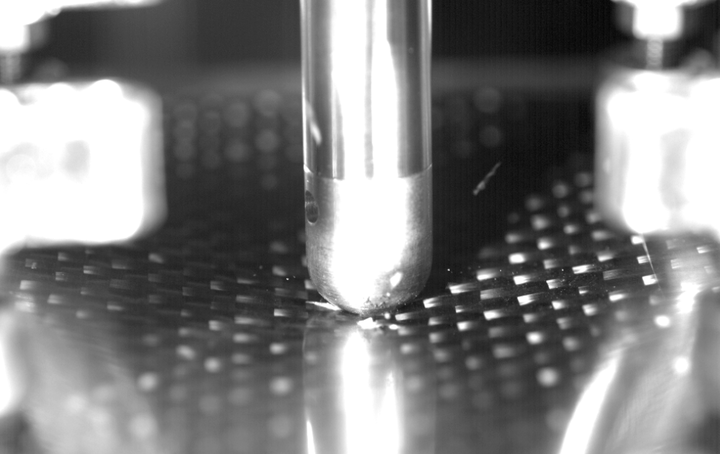MASTRO: Detecting barely visible damage with self-sensing carbon fibre components
Carbon fibre composites are being used more frequently in aerospace and automotive applications over aluminium, due to it being lightweight and high strength; - however due to the epoxy in the composites being brittle, they are prone to being damaged easily by impact events.
One issue in carbon fibre composites is called barely visible impact damage (BVID). The surface impacted suffers little damage - but on the reverse face of the impact - a lot of strain occurs and can lead to significant damage later on. If not detected and repaired at an early stage, this damage can increase in size and lead to more costs to repair. In the worst cases, this can lead to the catastrophic failure of the component.
For the aerospace and automotive sectors, a key aspect of reducing emissions is the electrification of the propulsion systems, and electrification of ancillary systems that have previously relied on heat provided by the burning of fuel in jet engines and internal combustion engines.
Increased use of composite materials in more areas of aircraft and cars has led to a requirement of these ancillary systems being compatible. In this work, the move to composite materials has given an opportunity to use the conductivity of the fibres as a detection method, making the change from metallics to composites have less impact on the manufacturers and operators of these vehicles.
Through MASTRO, a three-year Horizon 2020 project, the University of Sheffield Advanced Manufacturing Research Centre (AMRC) has developed multifunctional composites with three different functionalities to move to electrification and reduction in carbon emissions. Working with MASTRO project partner Embraer, these smart functionalities – self-curing, self-sensing and self-anti-icing – have been implemented in an aerospace demonstrator.

